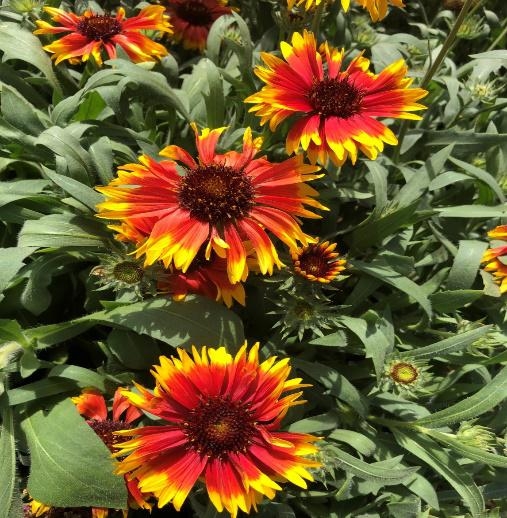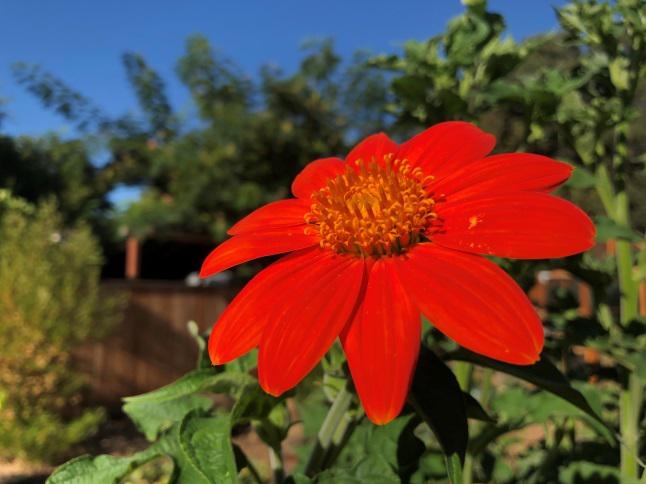VINE: Wisteria. There are three species of Wisteria commonly planted in our area. They are legumes and can fix nitrogen, so no nitrogen fertilizer is needed. The Japanese wisteria (Wisteria floribunda) was introduced into the US in 1830. It can grow to a height of 30 feet and has blue flowers. Another commonly planted wisteria is the Chinese wisteria (Wisteria sinensis) which was introduced in 1816. American wisteria (Wisteria frutescens) is a less fragrant native vine and often recommended as an alternative to the Asian varieties as it is less invasive, especially in the southeastern states. There are various color cultivars of all species.
W. floribunda (Japanese wisteria) twines clockwise when viewed from above, while W. sinensis (Chinese wisteria) twines counterclockwise. This is an aid in identifying the two most common species. Both species can be trained as trees which is a big help for controlling their rambunctious nature. They should not be planted on the wall of a home as they can be destructive to siding and gutters, and if left unpruned, can crush a house. The world's largest known wisteria, located in Sierra Madre, California, was planted in 1894 and covers more than one acre. The wisteria pictured was trained as a tree by the author. Unfortunately, it was planted next to a lilac and the wisteria often climbed into the lilac, so plant in isolation if possible.
PERENNIAL: Blanket flower, Gallardia x grandiflora, is a hybrid with many cultivars; see: Gallardia Cultivar. The genus was named after French naturalist Antoine Rene Gaillard de Charentoneau. The first species was described in 1788. It was the annual G. pulchella, a native from the southeastern US, north to Colorado and south into Mexico, with its 2-inch flowers of red with yellow tips. Lewis and Clark collected the much larger-flowered, short-lived perennial G. aristata in Montana in 1806, with its variable fringed flowers in reds and yellows. These two species were hybridized in a Belgian garden in 1857 to produce Gaillardia x grandiflora which is commonly planted now. While there are several species in this genus, most grown are hybrids.
It is a two foot tall, front-border plant that is a prolific bloomer in spring, summer and fall. The flower can reseed and spread through the garden. Since the original plants are hybrids, you can expect some variation from self-seeding. It is an annual in colder climates, but perennial in California; however, it is not usually a long-lived perennial. The plant does best in well-drained soil and in full sun. It is very heat tolerant and is a heavy bloomer and creates a blanket of red, orange, and gold blended flowers. Flowering is increased by deadheading.
ANNUAL: Mexican sunflower: Tithonia rotundifolia ‘Torch' is a delight in any garden. Native to Mexico and Central America ‘Torch' is one of several cultivars. It is a rather large plant, 6 x 4 ft., so giving it a lot of room is wise. If grown in a windy area staking is advised. It does best in full sun and soils that are well drained with dry to moderate moisture. Rich soils should be avoided as it causes weak-stemmed plants with excess foliage. Because of its tall stature, this annual is best planted at the back of borders and beds to form a backdrop for shorter plants. It can be used as a seasonal screen (especially if grown from transplants started early in the season). The flowers are attractive to a wide variety of bees, butterflies, and hummingbirds. It can be used as a cut flower with a vase life of about 4 days. Deadheading spent flowers will prolong blooming which is profuse through summer and fall. The flowers produce grey to black flattened triangular seeds which can be collected when dry (with gloves is advised) to grow in subsequent years. Seeds can be greenhouse started 6-8 weeks before frost, or seeded directly after frost danger is past.


